Piolets d'Or Announces the "Significant Ascents" of 2023
This list of 68 climbs is effectively a "long list" used to select nominees of the prestigious alpine award.
Find Everest in your own backyard - How an explorer trains for a world record during the pandemic

In 1899, a sailing vessel called the Belgica became stuck in the ice in Antarctica’s Weddell Sea for weeks under permanent nighttime. In order to stave off insanity, the crew took to walking in a circle around the ship. The route came to be known as “madhouse promenade.”
For many of us who are passionate about the outdoors, the Covid-19 pandemic has felt like our own permanent nighttime. With travel plans halted, it’s as if life, as we know it, has been put on pause. For an extreme explorer, travel lockdowns are particularly torturous. So Belgian adventurer Louis-Philippe Loncke challenged himself to an insane walking challenge in his backyard.
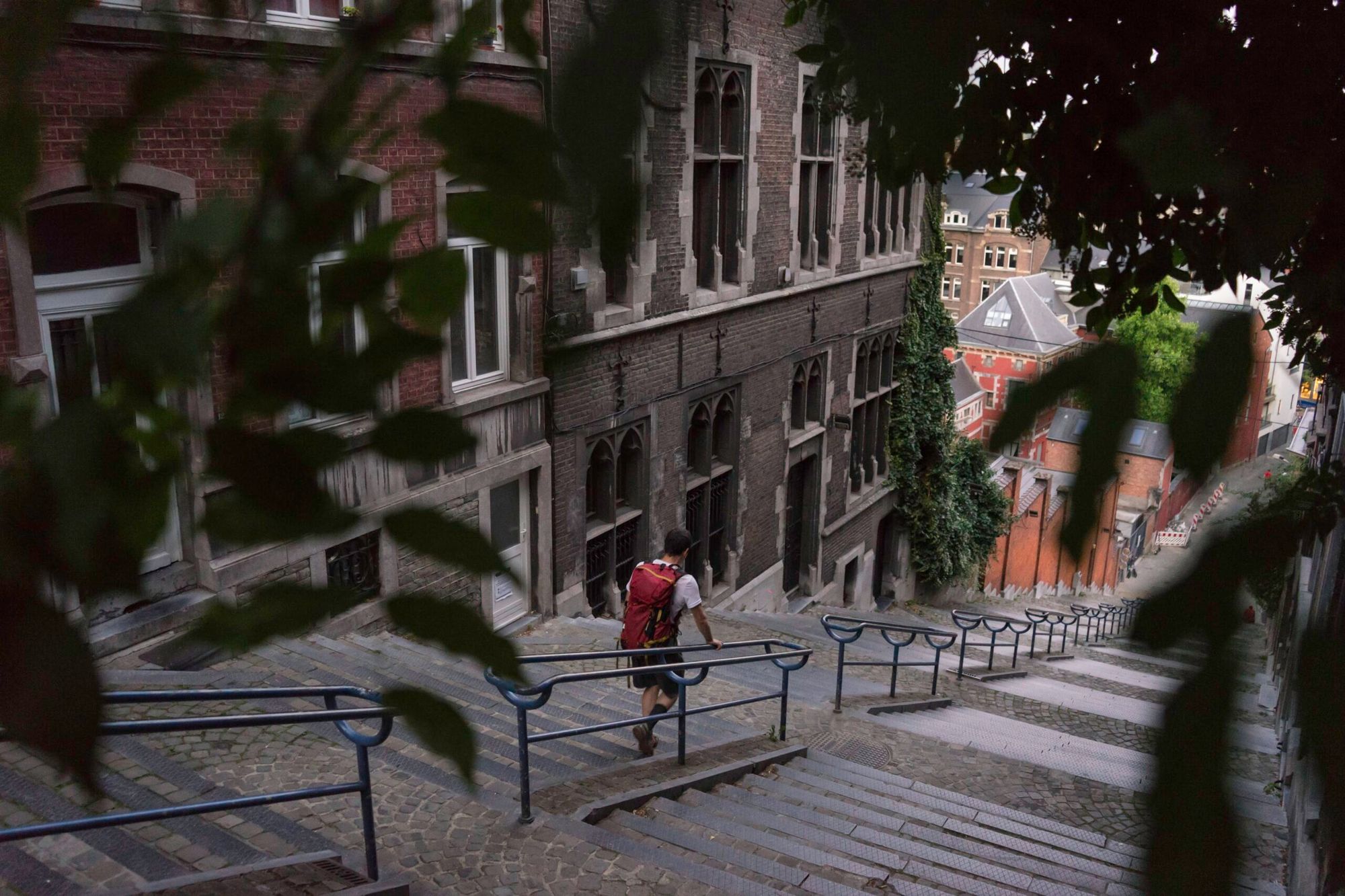
Louis-Philippe is known as “The Mad Belgian” for setting off across deserts on solo missions, carrying all of his food and supplies on his back. He’s an experienced distance hiker and desert expert. Loncke was even recognized as the European Adventurer of the Year for his crossings of the Simpson Desert in Australia, Death Valley in the United States, and the Bolivian salt flats - all unsupported.
Loncke learned about the need for proper training the hard way. After crossing the Simpson Desert, he lost 16 kilograms and couldn't run or jump for three weeks.
It took Loncke three to four months to rebuild his body. Now, he starts training for each expedition one year in advance, with an unwavering focus in the final three months, when, for Loncke, there is no turning back.
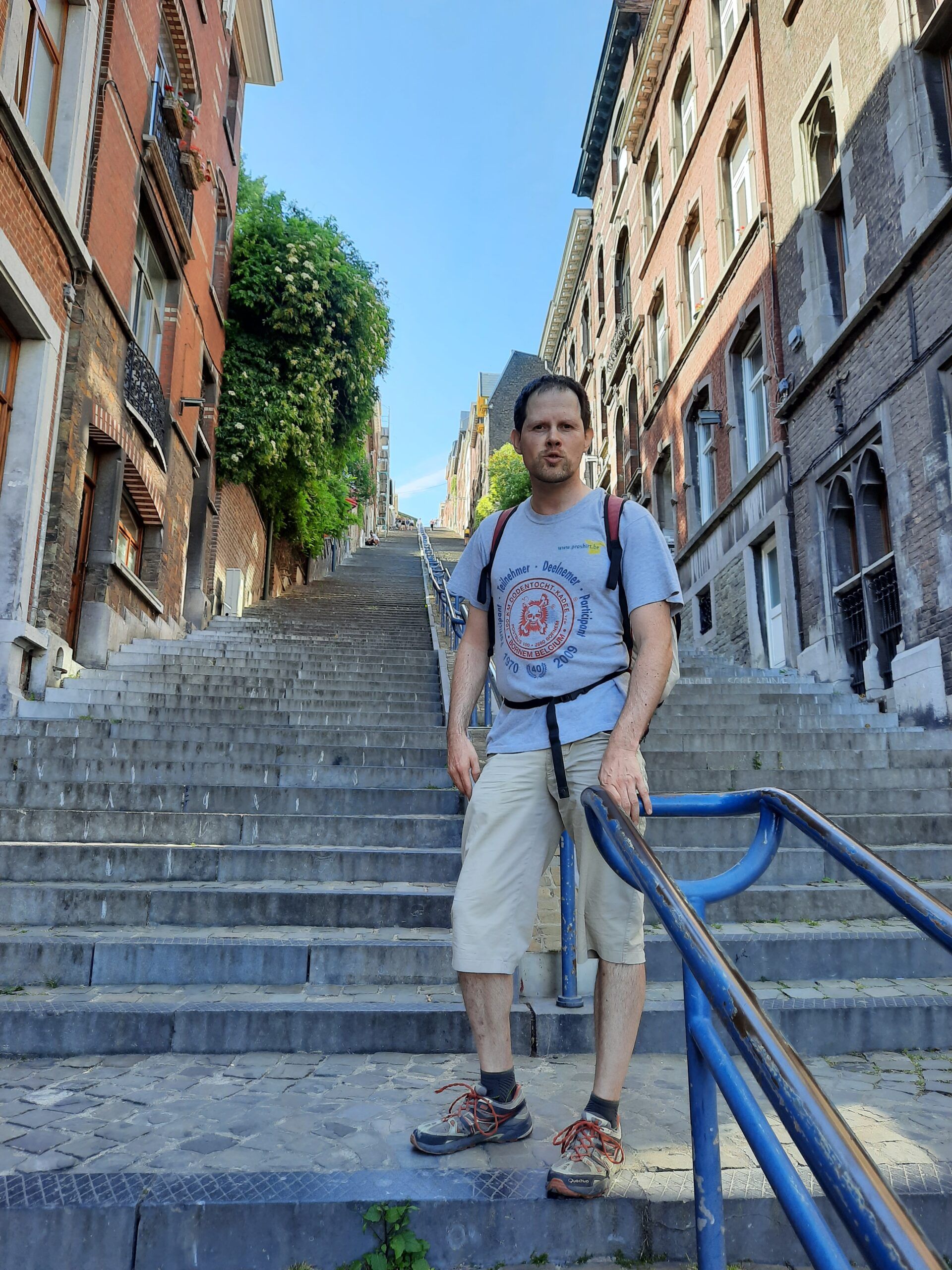
Loncke refused to let Covid lockdown stop him from pursuing his next world-first challenge, to cross the Pyrenees in his grueling unsupported style, but before he was ready to take his first step on the 700-kilometer journey, he would need to bring a mountain to him. So he built Everest in his backyard. [Listen to the podcast episode here.]
“You don’t want to have an injury on an unsupported mission that has never been done before. So you calculate everything to minimize the maximum risk.”
Loncke credits the idea to the butterfly effect - an abstruse chain of events that occurred half a world away. Prior to Covid, Loncke was training for a cycling challenge but he had to call it quits because he couldn’t put in the road training with the travel clampdown in Belgium.
“I have so many ideas that I prepare lots of expeditions in parallel.”
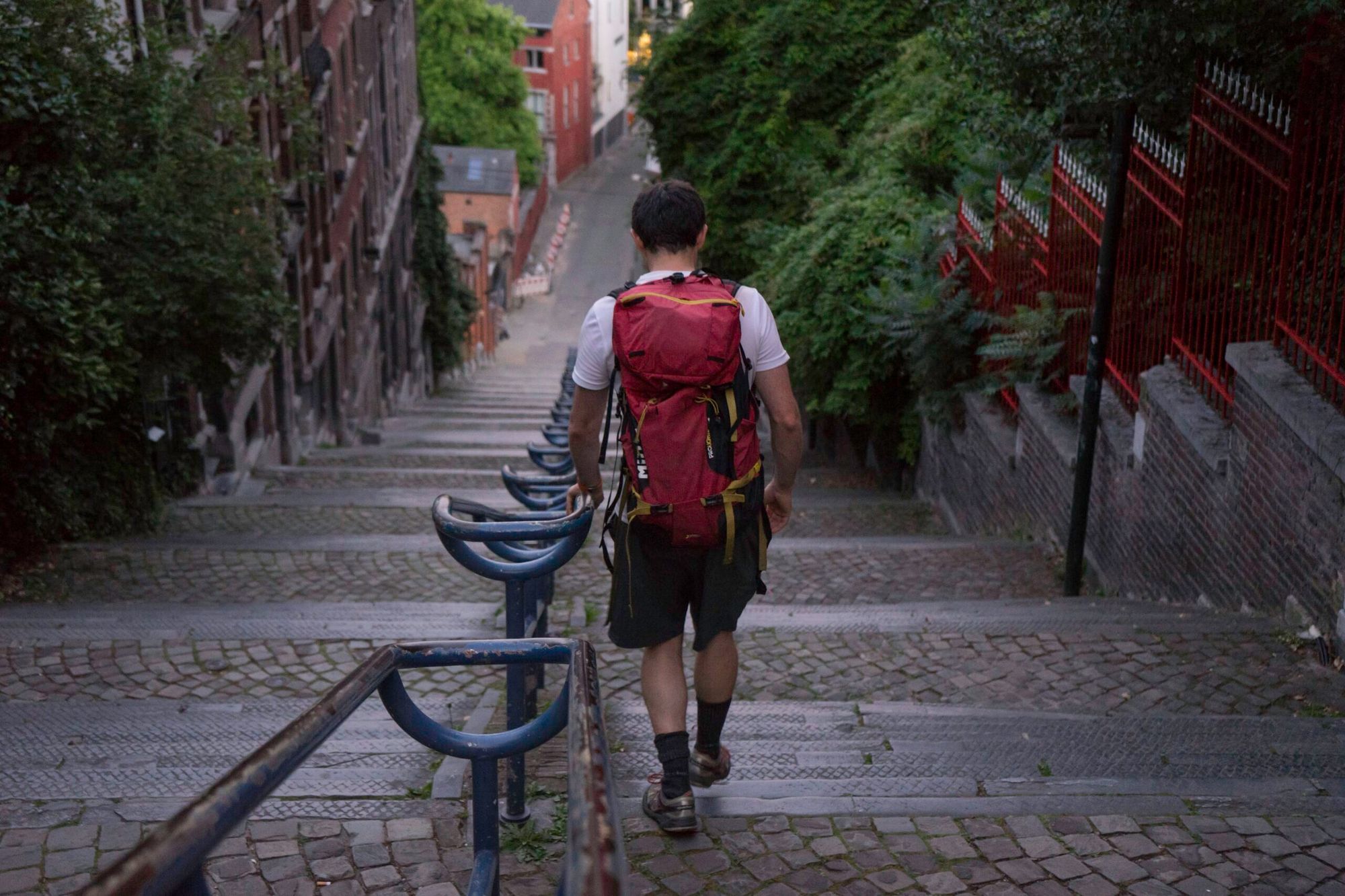
Almost by accident, Loncke discovered a towering staircase near his home called the Montagne de Bueren on a list of the 30 things to see in Belgium before you die. So, in true form, the Mad Belgian dreamt up a physical challenge that could nearly kill him.
The 374-step staircase is set at a 30% incline more fit for a gondola ride than a walk-up. Summiting these steps will give you a sweaty view of the city skyline.
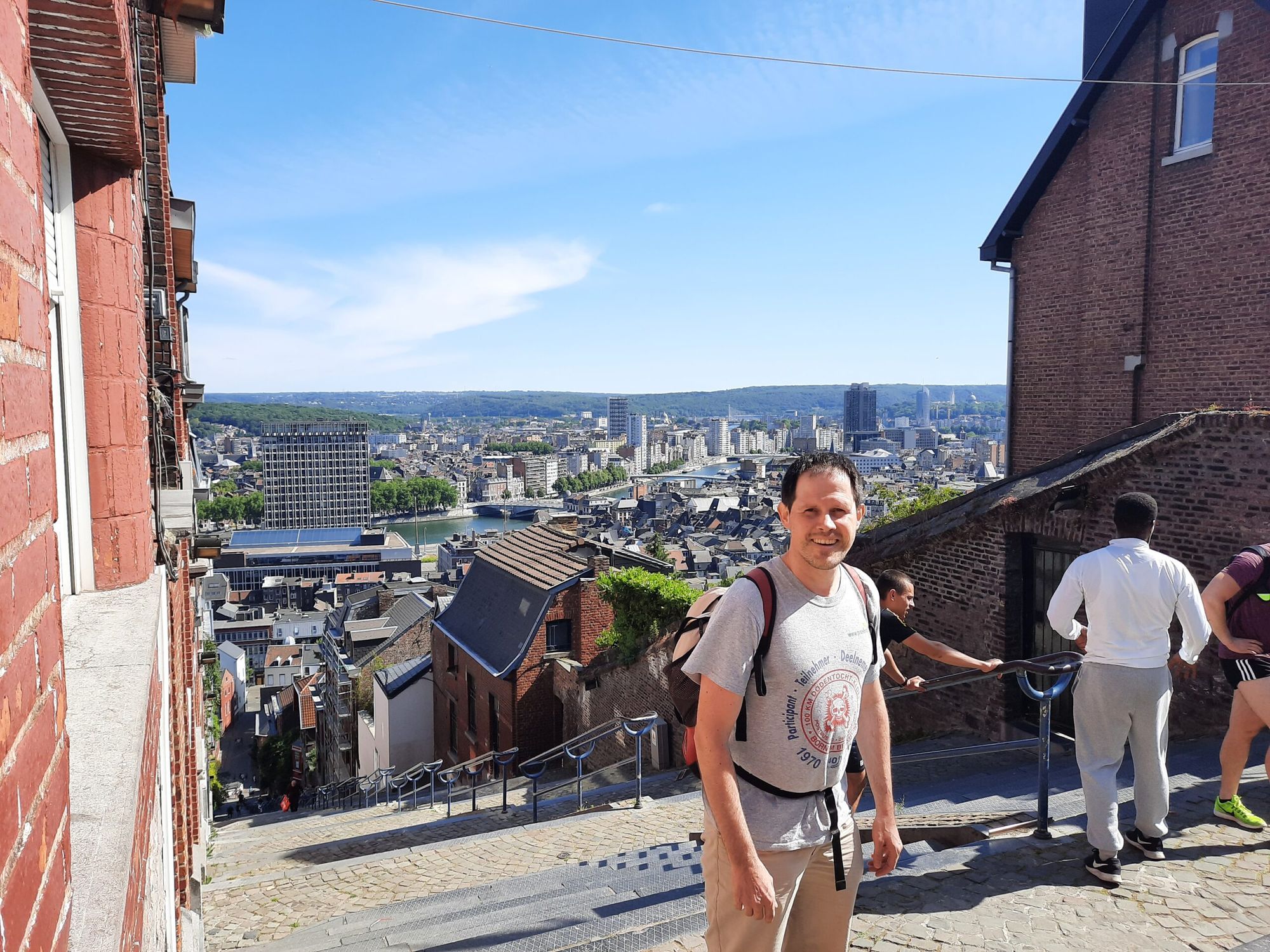
Loncke, the former logistics manager, did some quick calculations and determined that if he climbed the stairs 132.1 times, it would equal the height of Everest.
After a few weekend recon trips, Loncke initially hoped to climb all 8,849 meters up and 8,849 meters down in one go, non-stop. But he ended up begrudgingly accepting the human need for sleep so he officially set himself on a 72-hour challenge.
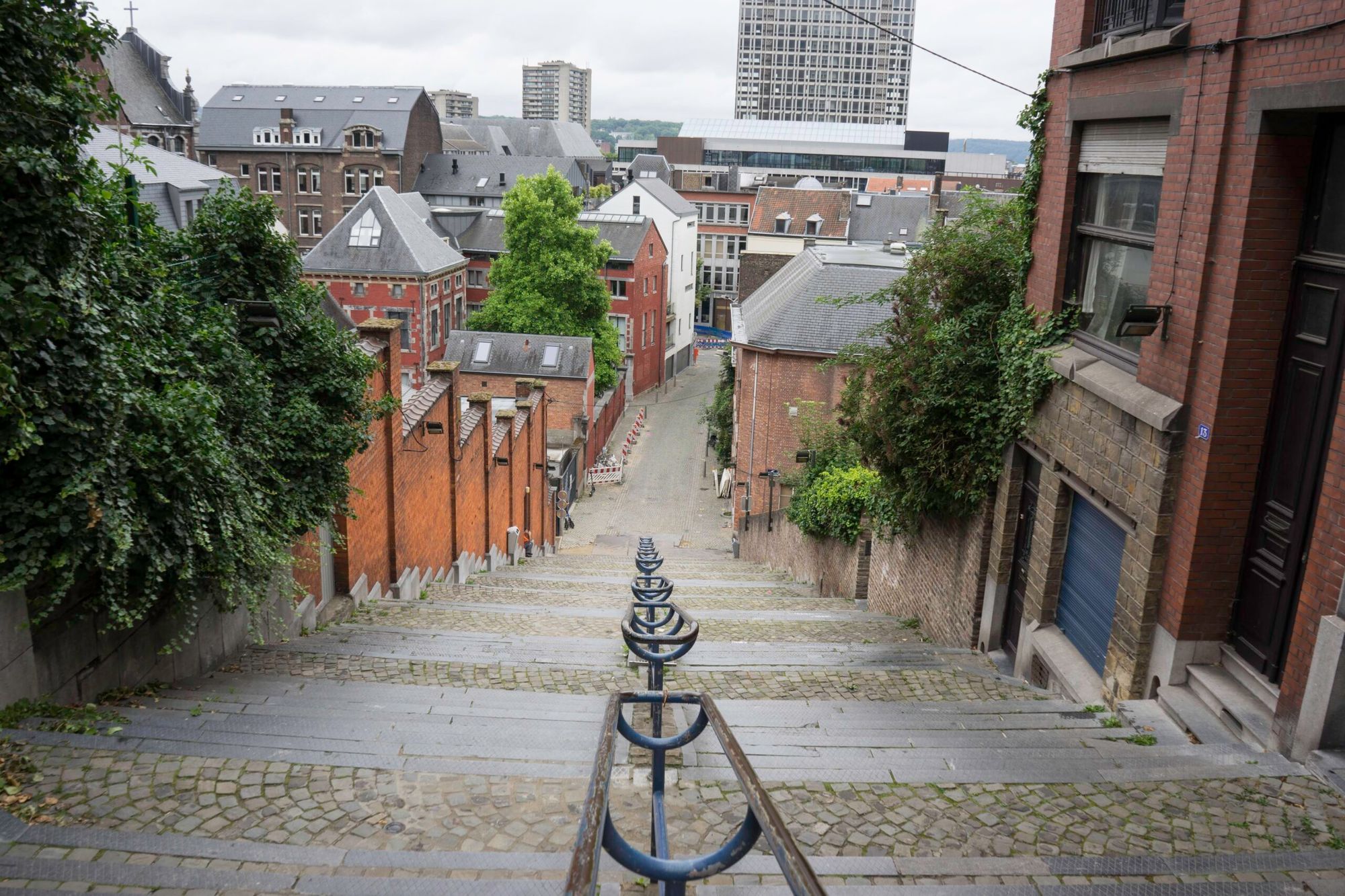
Nobody summits Everest in gym shorts, so Loncke committed to carrying twenty percent of his body weight, or 15 kilograms, in his backpack (about 33 pounds).
“I'm the first idiot to do it with a permanent weight of 15 kg to simulate altitude.”
Read next on TOJ: When We Unite, Nothing is Impossible: My Story on K2
To further simulate being on the mountain, Loncke slept five hours on the first night and four hours on the second night in his tent nearby thanks to a gracious neighbor.
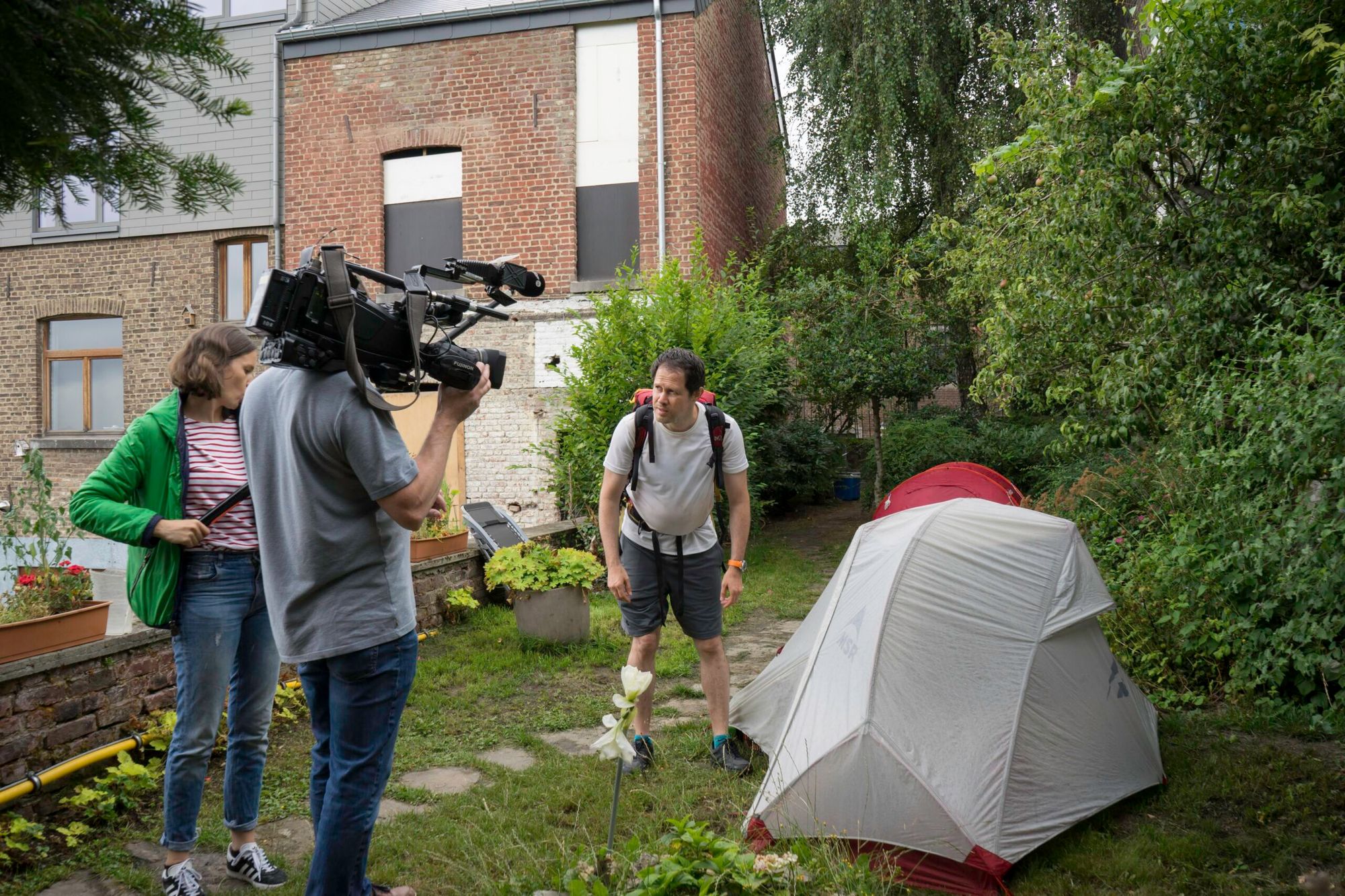
In total, Loncke completed the staircase 135 times, totaling 50,000 steps (9,000 meters) in 65 hours and 30 minutes. Admittedly, he grunted up the staircase a few extra times just to hit those nice round numbers.
One more thing - he refused to shower. (It’s unclear what effect this final stipulation had on tourism that weekend.)
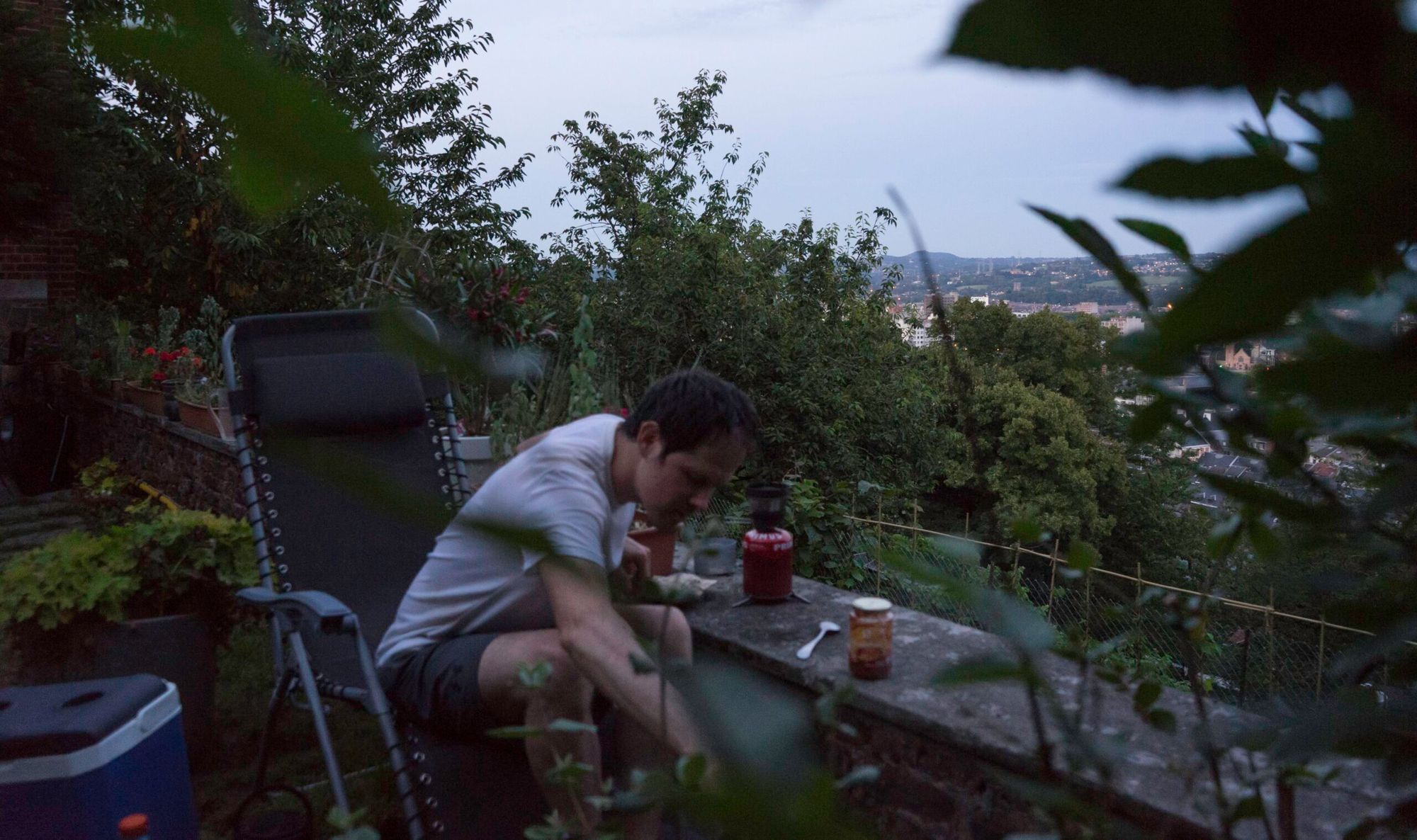
Perhaps Loncke endured the step after step monotony by mentally transporting back to 2009 when he trekked 400 km from Kathmandu to Everest Base Camp and back, distributing chocolate to raise funds for a mobile hospital in Nepal in support of the Sherpa - the backbone of Everest expeditions.
Five days after his Everesting on the Montagne de Bueren stairs, Loncke was prepped and ready for the Pyrenees with stronger legs and a soldier’s confidence. [Read Madman’s Promenade – Part 1: The Three Rules of the Pyrenees]
In fact, the Montagne de Bueren was originally built for garrisoned soldiers during a time of impending invasion as a shortcut to defend the town center. (But as Loncke will tell you, it was also a shortcut for the soldier’s nighttime recreation.)
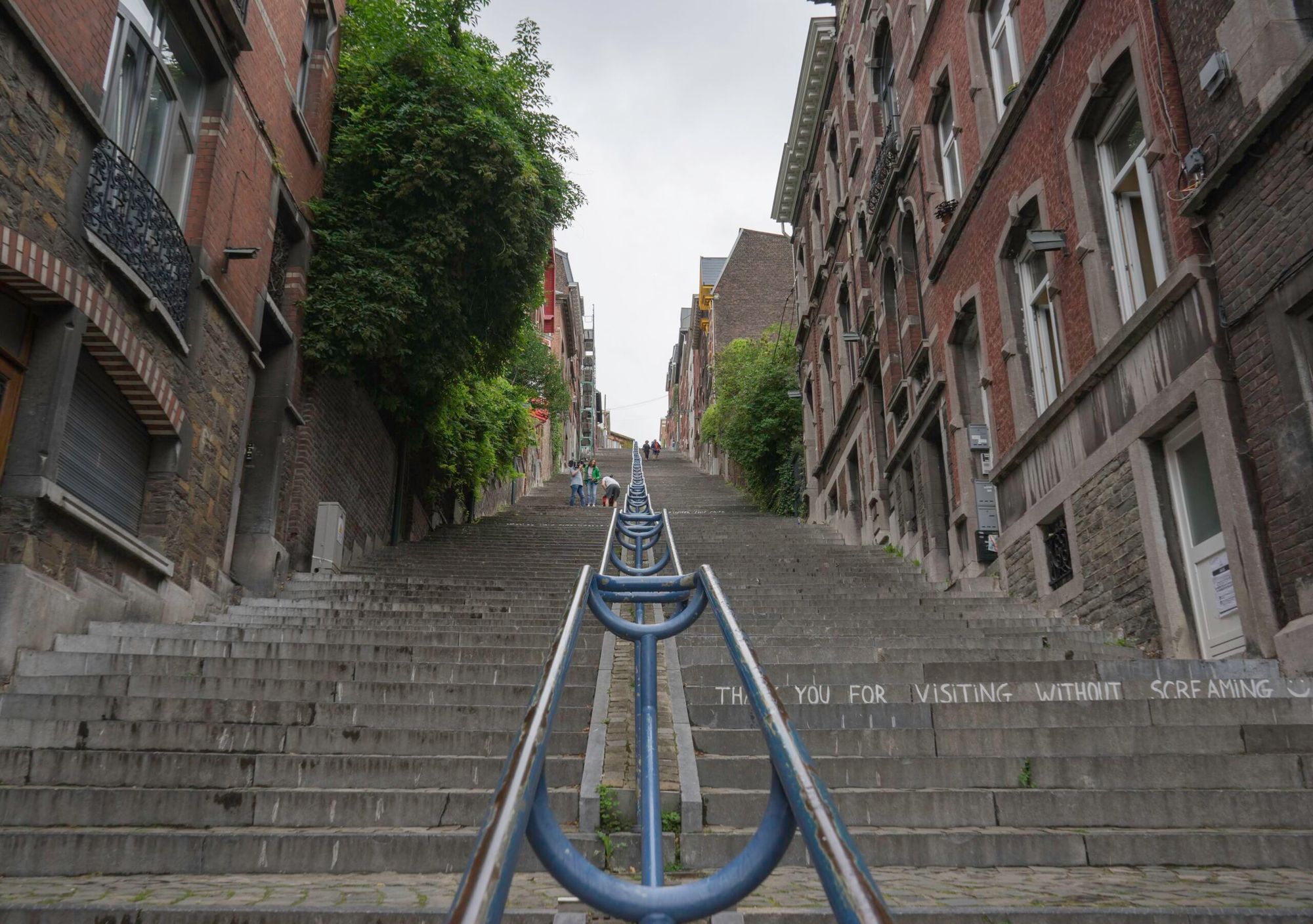
As Loncke winds down his days of heavy-load expeditions, he is building his legacy in another way by drawing attention to the world’s most significant explorers of all time, from Magellan to Messner.
Loncke is building a database that will be a reliable encyclopedia of adventure regardless of a person’s celebrity status - think Wikipedia for exploration.
In this episode of The Outdoor Journal Podcast, Loncke discusses how he conceived his Everesting challenge, how it paid off in the Pyrenees, and how all those passionate about the outdoors can find Everest in their backyard. [Listen to the podcast episode here.]
Read Madman’s Promenade – Part 1: The Three Rules of the Pyrenees
Follow Louis-Philippe Loncke on Instagram at @lonckelph
2nd best newsletter in the universe